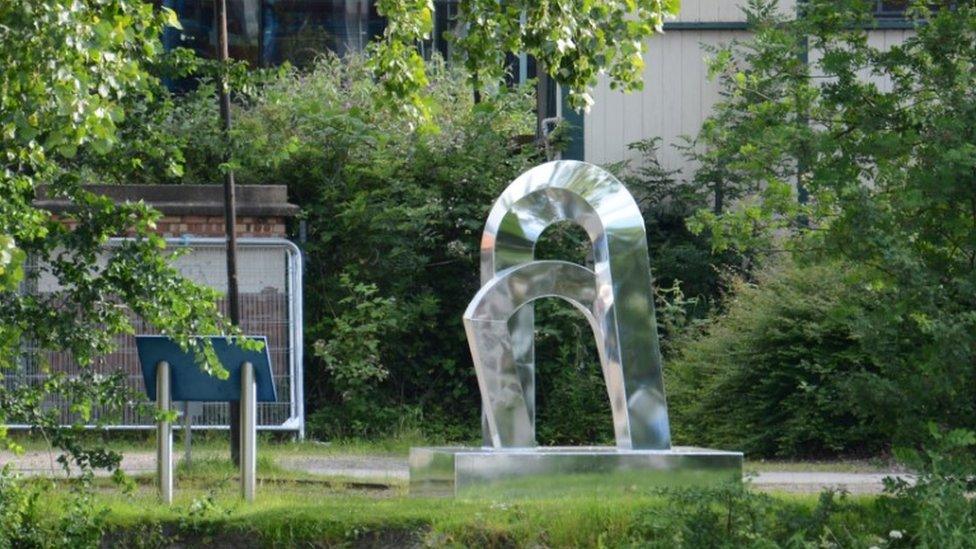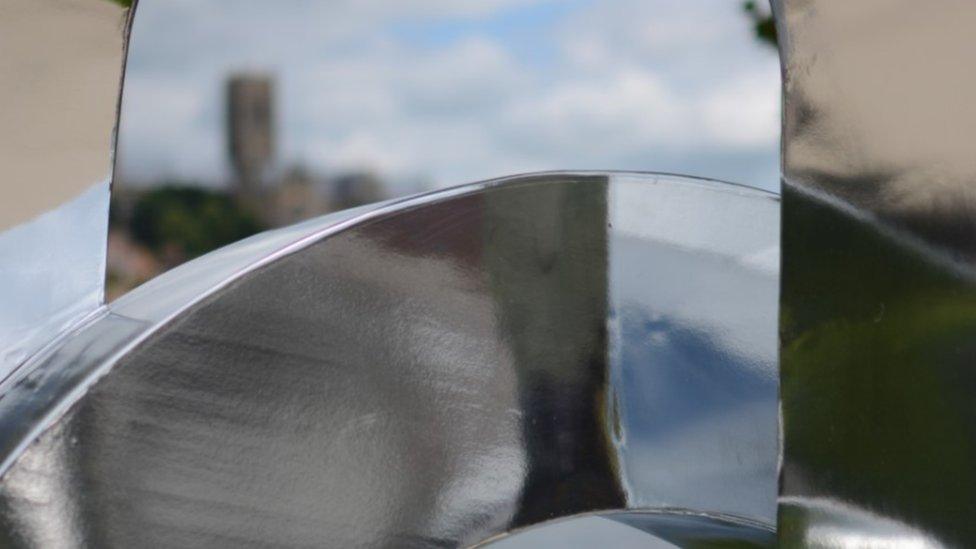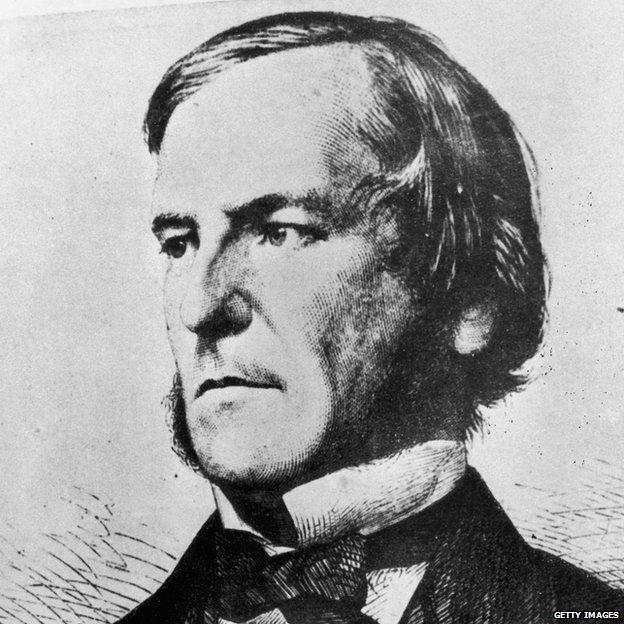George Boole: Sculpture honours Victorian coder
- Published

A sculpture marking the work of a Victorian mathematician, whose work is still used in computer programming, has been unveiled in his birthplace.
George Boole, who was born in Lincoln in 1815, invented Boolean logic, a system of AND, OR or NOT statements.
It is still used in games, apps and search engines, including Google, which uses plus or minus to narrow results.
Those behind the artwork, titled Perhaps, said it was about looking beyond yes and no.

The sculpture is inspired by the work of George Boole

It is situated on the Brayford Pool in Lincoln
Jeanine Griffin, from the university, who was involved in commissioning the work, said: "This new sculpture pays testament to a truly revolutionary thinker whose ideas continue to transform the way we live 150 years on.
"Boole's legacy is all around us; in every computer, smartphone and digital device."
The sculpture, comprising interlocking arcs coated in a reflective surface, has been created by Raqs Media Collective.
Monica Narula, from the New Delhi-based collective, said: "Lincoln was George Boole's birthplace. He must have walked by Brayford Pool, asking questions that needed answers in yes, no, and perhaps, perhaps.
"This work remembers those moments outside the boundaries of yes and no..."
The sculpture, which is temporary, will be in place close to the Minerva Building at the University of Lincoln for two months from 8th July.


George Boole's Boolean logic is still used today in mobile phones, computers, apps and search engines
Boolean logic
George Boole told a friend in 1851 Boolean logic could be "the most valuable if not the only valuable contribution that I have made or am likely to make to science and the thing by which I would desire if at all to be remembered hereafter".
The mathematician died on 8 December 1864. He is buried in Ballintemple, Cork, Republic of Ireland, where he spent his final years.
Commemorating him in Lincoln are a Boole memorial window in the cathedral, a plaque on his Pottergate house and a mention on an obelisk to city greats in St Marks.
Read more about George Boole and the AND OR NOT gates.

- Published8 December 2014

- Published14 October 2010